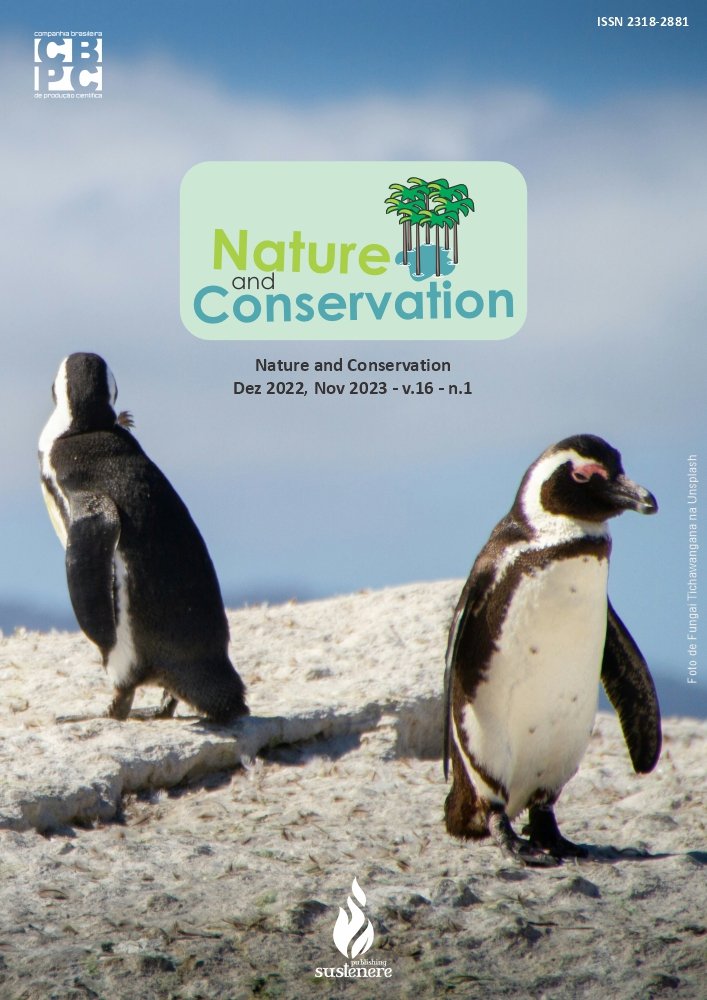Nitrate reducase activity and osmotic adjustment in young ucuúba plants
DOI:
https://doi.org/10.6008/CBPC2179-6858.2021.008.0010Keywords:
Osmotic adjustment, Nitrate reductase, VirolasurinamensisAbstract
Virola surinamensis, known as virola or ucuúba, is a species considered to be typically Amazonian, whose "habitat" are the floodplains and igapós, and which is known for having great economic potential, has been intensively exploited in recent years, culminating in extinction of some populations, resulting from selective extractivism. The aim of this study was to determine the nitrate reductase activity and the contents of some macromolecules of young plants of Virola surinamensis submitted to the application of two water treatments (stress/control) and rehydration. The experiment was conducted in the greenhouse of the Biotechnology Laboratory (BIOTEC) of the Federal University of Pará (UFPA - Campus Altamira, PA) from August to November 2020. The plants were subjected to two treatments of water regimes: irrigated ( control) and water deficit, in which the imposition of water deficit was obtained by suspending irrigation for cycles of 07 days, during 4 periods, the last being rehydration, distributed as follows: Time 0 (zero days of water deficit), Time 1 (07 days of water deficit), Time 2 (14 days of water deficit) and Time 3 (Rehydration for 07 days), totaling 21 days of treatments. During the period of the experiment, the plants in the control treatment were irrigated daily to replace the water lost by evapotranspiration. The experimental design used was completely randomized in a factorial scheme (control and water deficit) totaling 24 experimental units. Suspension of irrigation for 14 days altered the metabolism of young ucuúba plants, directly affecting the activity of the nitrate reductase enzyme and promoting an osmotic adjustment in the water-deficient plants, caused by the decrease in the relative water content and increases in the concentrations of proteins, total soluble amino acids, total soluble carbohydrates and proline, which were reversed after rehydration, however, the same did not occur with the levels of the studied photosynthetic pigments.
Downloads
Downloads
Published
Issue
Section
License
Copyright (c) 2021 Ibero-American Journal of Environmental Sciences

This work is licensed under a Creative Commons Attribution-NonCommercial-NoDerivatives 4.0 International License.
The CBPC - Companhia Brasileira de Produção Científica (Brazil CNPJ: 11.221.422/0001-03) the material rights of the published works. The rights relate to the publication of the work anywhere in the world, including rights to renewals, expansions and dissemination of the contribution, as well as other subsidiary rights. All electronically published works may subsequently be published in printed collections under the coordination of this company and / or its partners. The authors preserve the copyright, but are not allowed to publish the contribution in another medium, printed or digital, in Portuguese or in translation.









